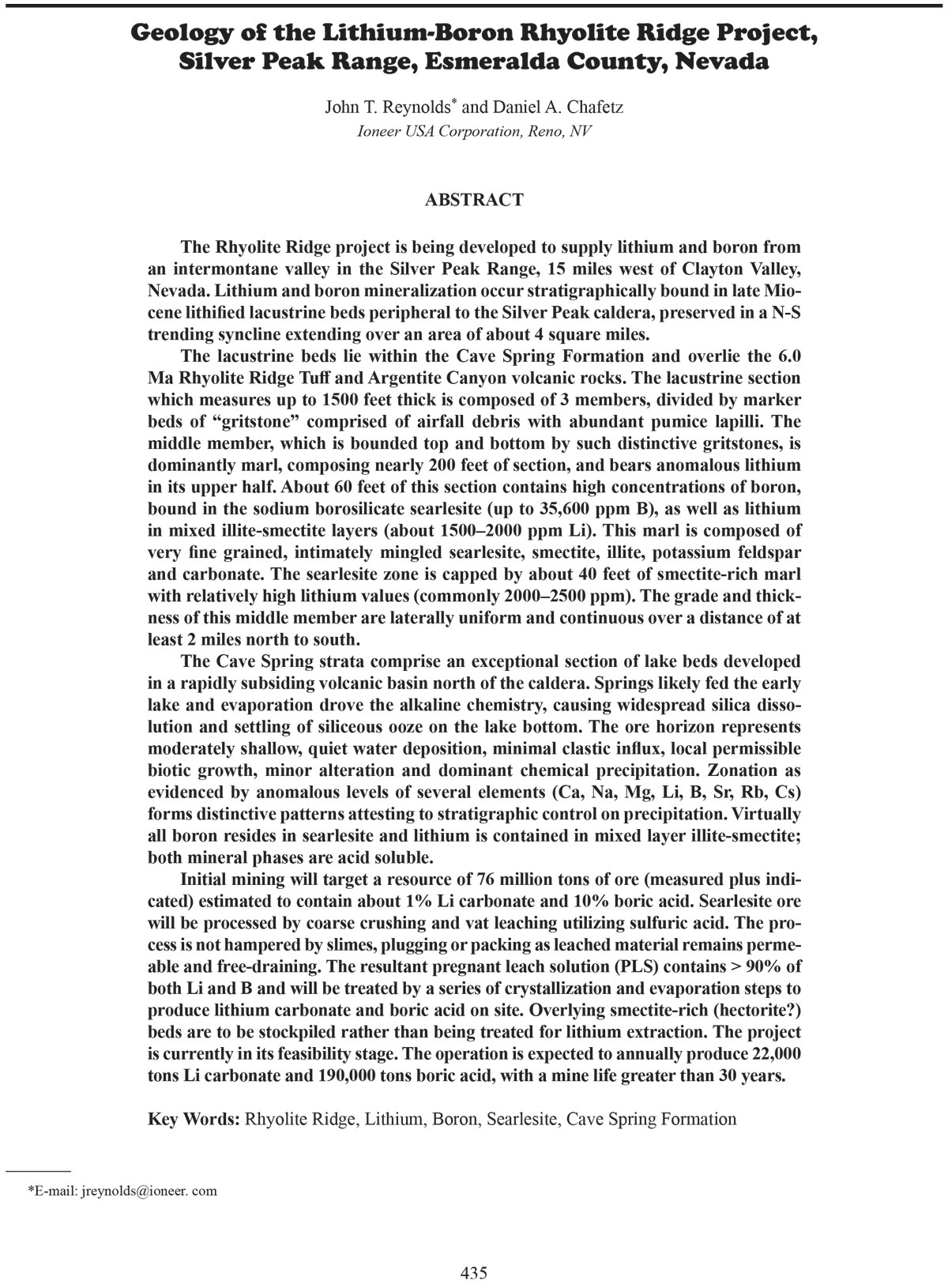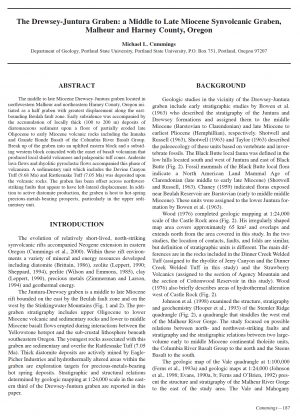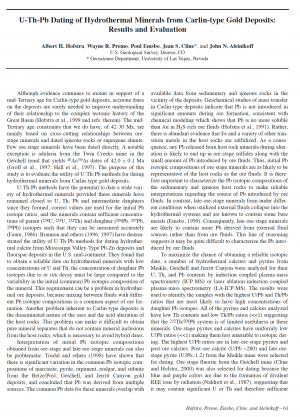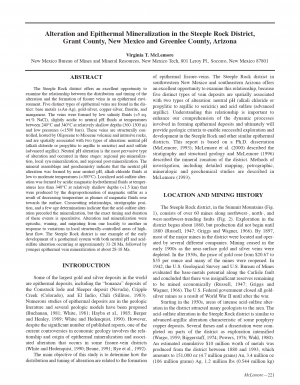Description
The Rhyolite Ridge project is being developed to supply lithium and boron from
an intermontane valley in the Silver Peak Range, 15 miles west of Clayton Valley,
Nevada. Lithium and boron mineralization occur stratigraphically bound in late Miocene lithified lacustrine beds peripheral to the Silver Peak caldera, preserved in a N-S
trending syncline extending over an area of about 4 square miles.
The lacustrine beds lie within the Cave Spring Formation and overlie the 6.0
Ma Rhyolite Ridge Tuff and Argentite Canyon volcanic rocks. The lacustrine section
which measures up to 1500 feet thick is composed of 3 members, divided by marker
beds of “gritstone” comprised of airfall debris with abundant pumice lapilli. The
middle member, which is bounded top and bottom by such distinctive gritstones, is
dominantly marl, composing nearly 200 feet of section, and bears anomalous lithium
in its upper half. About 60 feet of this section contains high concentrations of boron,
bound in the sodium borosilicate searlesite (up to 35,600 ppm B), as well as lithium
in mixed illite-smectite layers (about 1500–2000 ppm Li). This marl is composed of
very fine grained, intimately mingled searlesite, smectite, illite, potassium feldspar
and carbonate. The searlesite zone is capped by about 40 feet of smectite-rich marl
with relatively high lithium values (commonly 2000–2500 ppm). The grade and thickness of this middle member are laterally uniform and continuous over a distance of at
least 2 miles north to south.
The Cave Spring strata comprise an exceptional section of lake beds developed
in a rapidly subsiding volcanic basin north of the caldera. Springs likely fed the early
lake and evaporation drove the alkaline chemistry, causing widespread silica dissolution and settling of siliceous ooze on the lake bottom. The ore horizon represents
moderately shallow, quiet water deposition, minimal clastic influx, local permissible
biotic growth, minor alteration and dominant chemical precipitation. Zonation as
evidenced by anomalous levels of several elements (Ca, Na, Mg, Li, B, Sr, Rb, Cs)
forms distinctive patterns attesting to stratigraphic control on precipitation. Virtually
all boron resides in searlesite and lithium is contained in mixed layer illite-smectite;
both mineral phases are acid soluble.
Initial mining will target a resource of 76 million tons of ore (measured plus indicated) estimated to contain about 1% Li carbonate and 10% boric acid. Searlesite ore
will be processed by coarse crushing and vat leaching utilizing sulfuric acid. The process is not hampered by slimes, plugging or packing as leached material remains permeable and free-draining. The resultant pregnant leach solution (PLS) contains > 90% of
both Li and B and will be treated by a series of crystallization and evaporation steps to
produce lithium carbonate and boric acid on site. Overlying smectite-rich (hectorite?)
beds are to be stockpiled rather than being treated for lithium extraction. The project
is currently in its feasibility stage. The operation is expected to annually produce 22,000
tons Li carbonate and 190,000 tons boric acid, with a mine life greater than 30 years.





